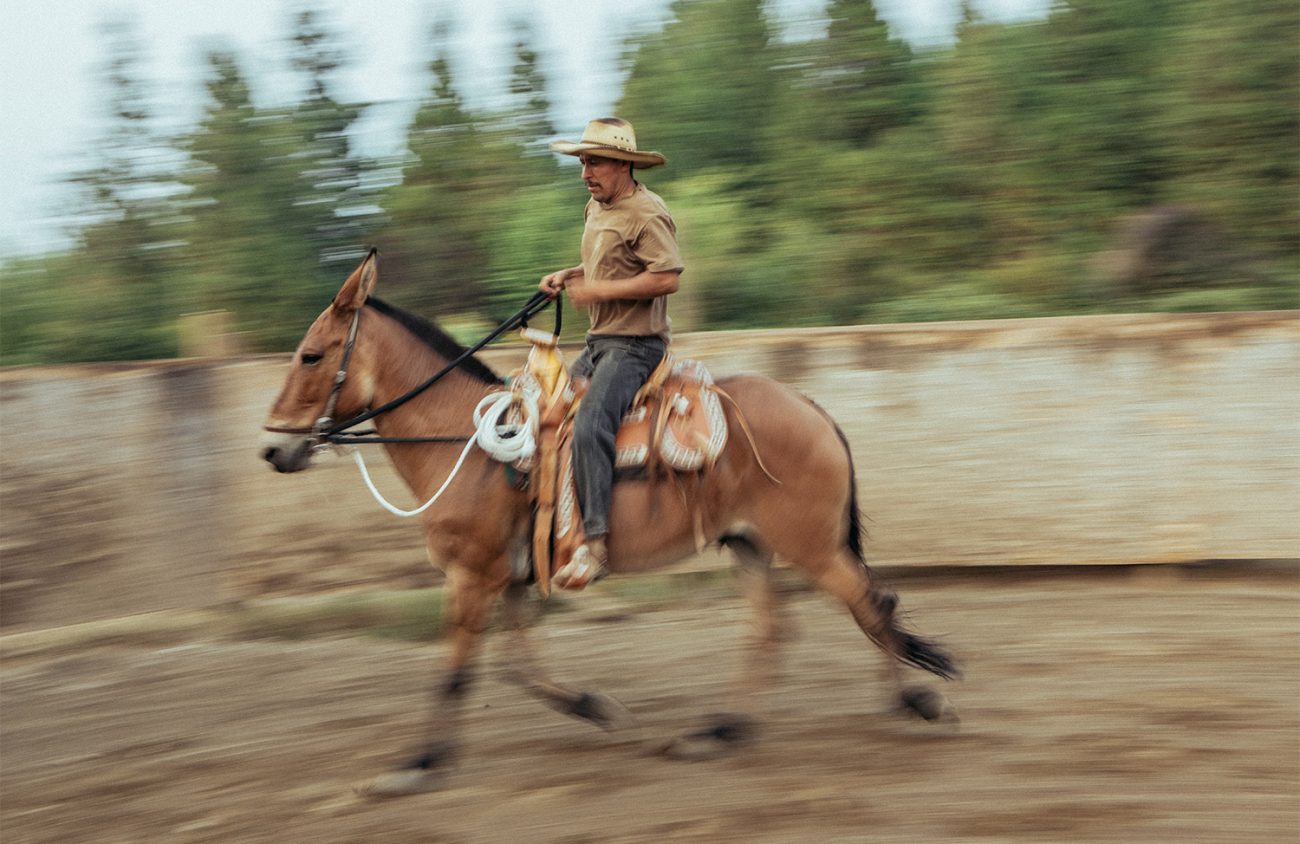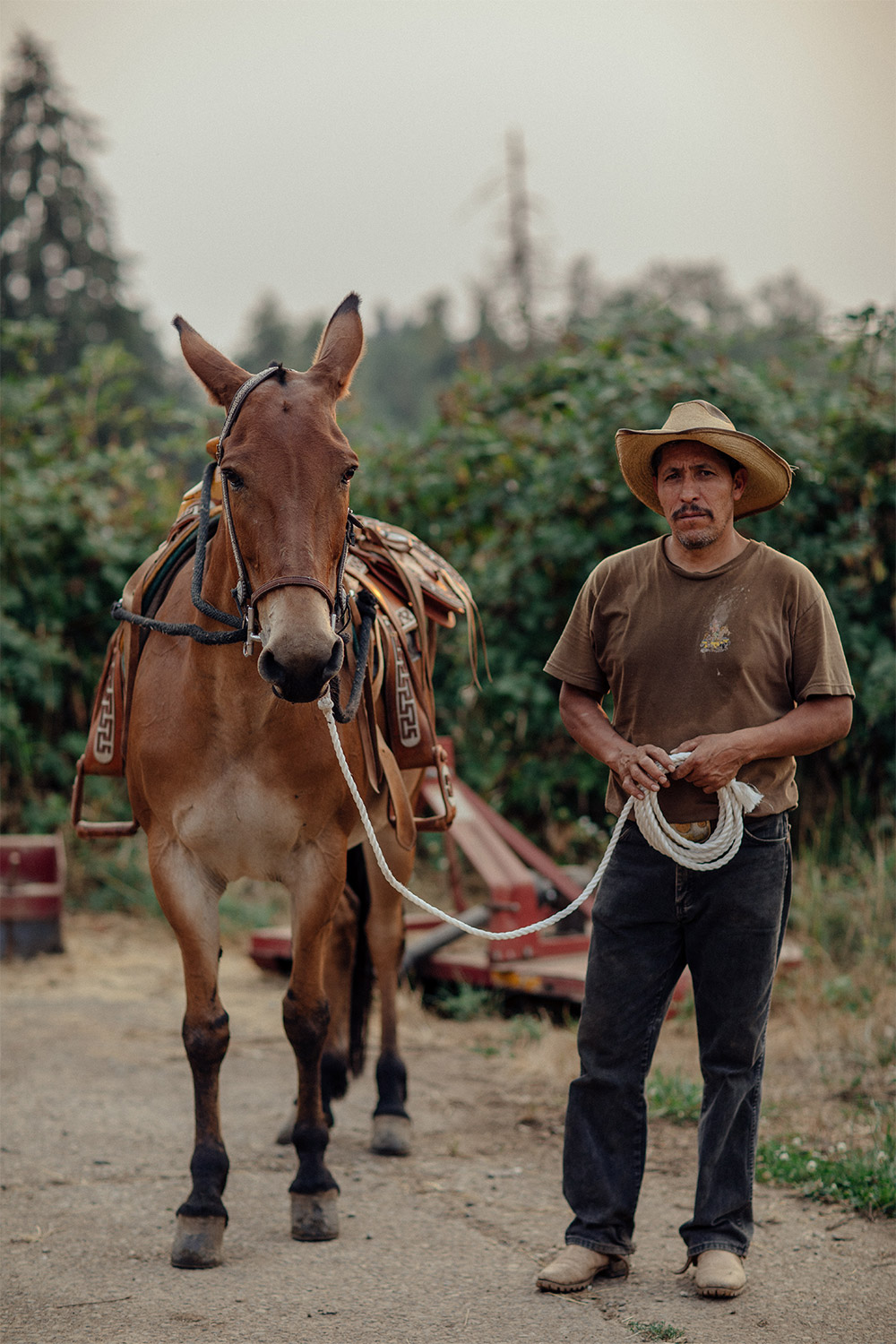Agustin Cisneros was nine years old the first time he rode a horse and rounded up cattle. He was in Mexico, on his grandfather’s ranch near Guadalajara when his father placed him on a horse and told him to go lead a group of cows into a field.
“My dad said, ‘OK just ride this horse and take these cows to this field.’ And you just figure it out,” he says.
Cisneros says he was terrified, but he quickly learned that the horse knew what to do and where to go. So he learned from the horse how to herd cattle, and in a few weeks, he learned to love it. Now, decades after a horse taught Cisneros how to ride for work, he now teaches the horses, training them for other riders.
He works out of a barn in Pleasant Hill. When I go to meet him, he is in a round pen, wearing a cowboy hat, jeans and a brown T-shirt, standing surrounded by about 10 horses — four of them are stallions and several are mares. They stand still as he methodically hoses each one off in the evening of a 103 degree day.
They are not all his horses. Cisneros only owns three horses — well, two horses and a mule. The others are horses that he is currently training. Self-effacing, he describes himself as a horse whisperer. His effect on them is evident by their stillness as he makes his way across the round pen.
People send their horses to Cisneros and explain what they want the horses to be trained to do. Often, he works with green horses, which are horses with little to no training. After months of diligent work, Cisneros returns the horse to its owner. He says he is proud when he meets the needs of the horse owner.
“That is my favorite part of training,” Cisneros says. “When someone comes to me and says, this is what I want.”
After first learning how to ride a horse when he was nine, Cisneros spent the next years of his life working with the horses and cattle on the ranch. In Mexico, he explains, riding horses is not a hobby, it’s work — part of making a living.
“In Mexico, the horses are for work,” he says. “When I was there I used my horses every single day to run the cows.”
Horses were in Cisneros’ everyday life until he was in his teens and moved to Oregon. It was no longer practical for him to have horses. In Mexico, he explains, when you acquire a horse, it then lives in a field and gets put to work. In the U.S., if you don’t own property, you have to buy the horse and then pay to board it somewhere.
“I mean, you start from the ground,” Cisneros says, reflecting on when he moved to the U.S. “You don’t have anything. When I was in Mexico I was always with horses, and when I came over here I wasn’t with horses for 20 years.”
After those 20 years went by, Cisneros says he wanted to start working with horses again, rekindling his childhood love for the animal and the hard work that comes with it. He got an Andalusian cross named Speedy, and trained him. Cisneros says he even trained Speedy to sit and lie down.
“I told my wife I taught him this so that when I get old I can just get right on him,” he laughs. He has since sold Speedy.
Now, Cisneros has his two horses and a mule. Mules, a cross between a male donkey and a female horse, are similar to horses in size, though their ears are generally larger and their faces are longer. Cisneros says one of the biggest differences between a mule and horse is that horses are smarter and easier to train. Mules can be stubborn.
“That mule did not have brakes,” he says, recalling his first times riding his mule, Samson. “Now I can take him to the parade and my kids can ride him. He does great with me.”
When he isn’t training horses, Cisneros rides Samson in parades and fairs. He also enjoys cattle roping on his brother-in-law’s farm. He takes both Samson and his horse Bucky out to do it.
Cisneros gets out a long, bunched up braided cowhide rope and demonstrates how far the rope can fly and how precise it needs to hit the target, by aiming at a car tire. He swings the rope with ease.
Cisneros was taught horses were for work, and they are, he says, but they also make great companions. The work it takes to train them has remained his passion.
“Horses make me happy because, when they first come to me, you can hardly touch their ears or do anything with them. With Samson, I worked on him and now he lets me touch his ears,” Cisneros laughs. “They used to be wild, and now anybody can handle them.” ν

